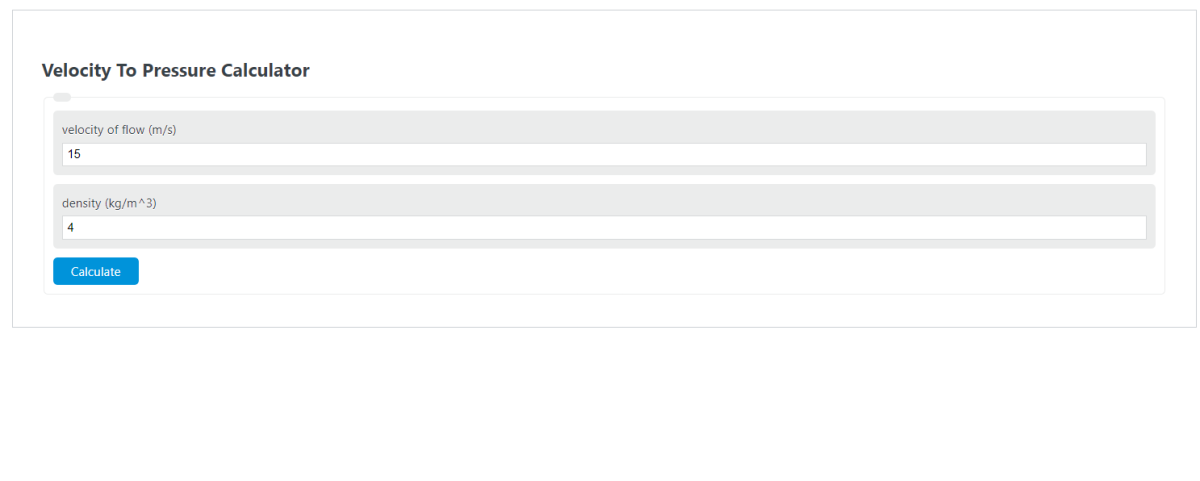Enter the velocity of flow (m/s) and the density (kg/m^3) into the calculator to determine the Pressure From Velocity.
- All Pressure Calculators
- Flow Rate Pressure Calculator
- Pipe Pressure Calculator
- Volume to Pressure Calculator
- Weight to Pressure Calculator
- Voltage to Pressure Calculator
- Velocity to Work Calculator
Pressure From Velocity Formula
The following formula is used to calculate the Pressure From Velocity.
P = V^2*d / 2
- Where P is the Pressure From Velocity (pascals)
- V is the velocity of flow (m/s)
- d is the density (kg/m^3)
To calculate pressure from velocity, square the velocity, multiply by the density, then divide by 2.
How to Calculate Pressure From Velocity?
The following two example problems outline how to calculate the Pressure From Velocity.
Example Problem #1:
- First, determine the velocity of flow (m/s). In this example, the velocity of flow (m/s) is given as 53.
- Next, determine the density (kg/m^3). For this problem, the density (kg/m^3) is given as 34.
- Finally, calculate the Pressure From Velocity using the equation above:
P = V^2*d / 2
Inserting the values from above and solving the equation:
P =53^2*34 / 2 = 47753 (pascals)
Example Problem #2:
Using the same process as above, first define the variables required by the formula. In this case, these values are:
velocity of flow (m/s) = 83
density (kg/m^3) = 13
Entering these values yields:
P = 83^2*13 / 2 = 44778.5 (pascals)
